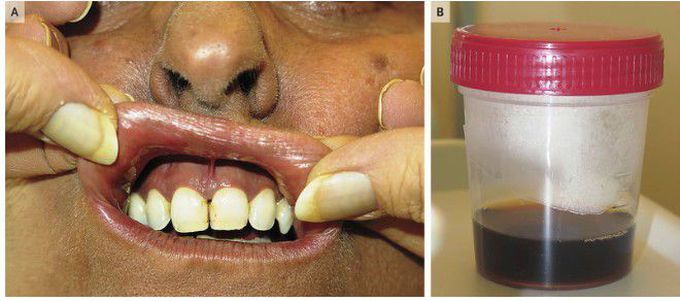


Diffuse Melanosis and Melanuria
A 47-year-old woman presented to the dermatology clinic with diffuse, progressive discoloration of the skin, nails, and oral mucosa (Panel A) and darkening of the urine (Panel B) that had developed over a period of 4 weeks. Eight years before presentation, she had received a diagnosis of melanoma after undergoing biopsy of a lesion on the right shoulder. At that time, the melanoma was treated with wide surgical excision; sentinel lymph-node biopsy was negative. Six months before presentation, the patient had received a diagnosis of metastatic melanoma, with metastases found in the brain, lung, liver, and vertebrae. Because the melanoma was BRAFV600E positive, the patient was treated with dabrafenib and trametinib as well as with radiation therapy to the vertebral lesions. Diffuse melanosis and melanuria are rare complications of metastatic melanoma and are associated with a very poor prognosis. The exact mechanism is unknown, but it is thought to involve cytolysis of melanoma cells, leading to the release of large amounts of melanin and melanin precursors into the circulation. Despite treatment, the disease progressed, and the patient died 2 weeks after presentation.

